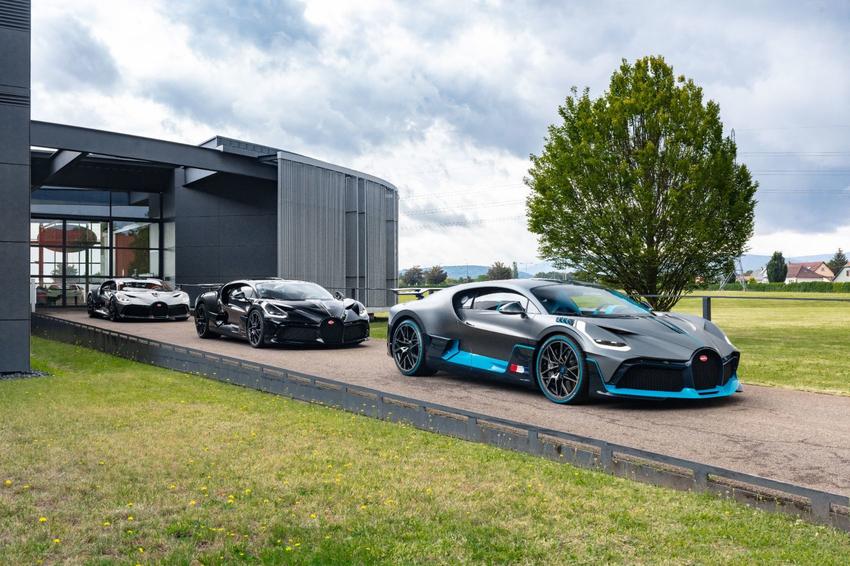The evolution of supercars at speeds exceeding 250 mph [infographic]
Look at any modern supercar in the world, and you will find some of the most amazing engineering feats of all time, adding luster to a paved asphalt. Cars like Pagani Zonda and McLaren F1 make ordinary sports cars look like children's toys.![The evolution of supercars at speeds exceeding 250 mph [infographic] The evolution of supercars at speeds exceeding 250 mph [infographic]](https://website-google-hk.oss-cn-hongkong.aliyuncs.com/article-website/baike/2021/8/30/6cf853665b5d6567e28c4f81189716f8.jpg?x-oss-process=image/auto-orient,1/quality,q_70/format,jpeg)
But how did it all get started? We know how amazing the supercars of today are, but they haven’t always been like this. There had to be a first one. What was it like?
Unsurprisingly, the title of world’s first supercar is hotly debated and highly coveted. Auto enthusiasts have many different opinions about which car was the real first supercar, but these three are the most popular.
Let’s take a look at each car and its claim to fame.
The Bentley Speed Six
The Mercedes 300SL “Gull-Wing”
The Lamborghini Miura
The Bentley Speed Six
The Bentley Speed Six Touring Model (Photo by André Ritzinger)
Released in 1926, the Bentley Speed Six was truly a car ahead of its time. It won both the 24 Hours of Le Mans and the Brooklands Double 12, among other titles, making it the winningest racing model that Bentley has ever produced.
The engineering behind this car was genuinely revolutionary. Think of it this way: the Ford Model T has was the very first commercial automobile to be produced, and it was released less than two decades before the Bentley Speed Six.
Now consider the fact that the Speed Six could break 60 mph without breaking a sweat, topping out at a max speed of 80 mph. For 1926, that’s some serious speed.
The Mercedes 300SL “Gull-Wing”
The 300SL in all its glory (Photo by Stephane Rossignol)
One of the key characteristics of the supercar is its pure focus on speed and design. As a rule, supercars have very little practical driving merit (which is okay, because they’re awesome). That’s why they’re set apart from any other class of car.
Well, that’s the argument for designating the Mercedes 300SL Gull-Wing as the world’s first supercar. It was really the first automobile to be designed without any regard for practical driving ability. Its primary purpose was to tear up gravel and look great while doing it.
The Lamborghini Miura
The legendary car ready for a race...or perhaps just a car show (Photo by Otis Blank)
At its release in 1966, the Lamborghini Miura was the absolute fastest street car available. That already scores it some points in the fight for the title of first supercar. Company founder Ferruccio Lamborghini’s drive to conceptualize and release the Miura was fueled by his close rivalry with Enzo Ferrari, which may explain why the Miura set such a new precedent in the world of high end sports cars.
Technically, the Lamborghini Miura was the first car for which the term “supercar” was first coined. However, it isn’t the first car to be called a supercar. For the sticklers who like to keep things official, the Miura wins for being the first car to hold the “official” title of supercar.
View more supercar history in the graph (thanks to HR Owen) as follows:
-
Latest
 Bugatti Divo: A glimpse of what modern bodybuilding looks like
Bugatti Divo: A glimpse of what modern bodybuilding looks likeThe last time I saw something like the Bugatti Divo supercar, it was about to hear the sound of a mouse. Seriously, how mean can you make a car look? Again, when the cat in question is powered by a 1,...
-
Next
 Volkswagen Tiguan, a tough little beast
Volkswagen Tiguan, a tough little beastVolkswagen's Tiguan, they are still a new small SUV with many advantages. Everyone who drives it says it’s screwed together nicely, and its size is suitable for more driving situations than a Hummer....
Popular Articles
- Ivy Charging Network cooperates with the Ontario municipal government to build a level 2 charger
- The Canadian government invests in a clean car and aerospace center in Hamilton
- Mitsubishi Motors Canada Appoints Kenji Harada as New President and Chief Executive Officer
- Nissan announces Canadian pricing for the new 2021 Rogue
- FedDev Ontario invests in Canada's first car accelerator in Windsor-Essex
- 2019 Volvo V60 unveiled, emphasizing versatility and safety
